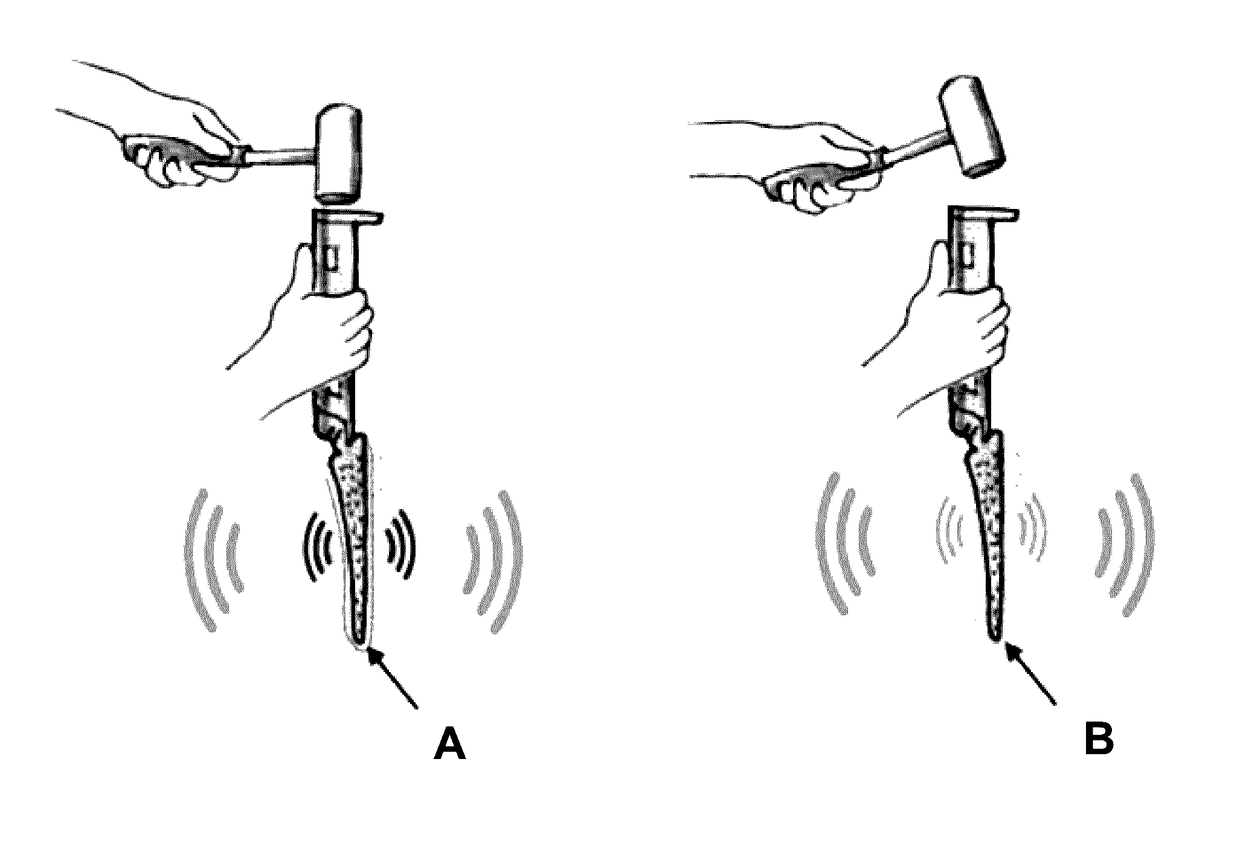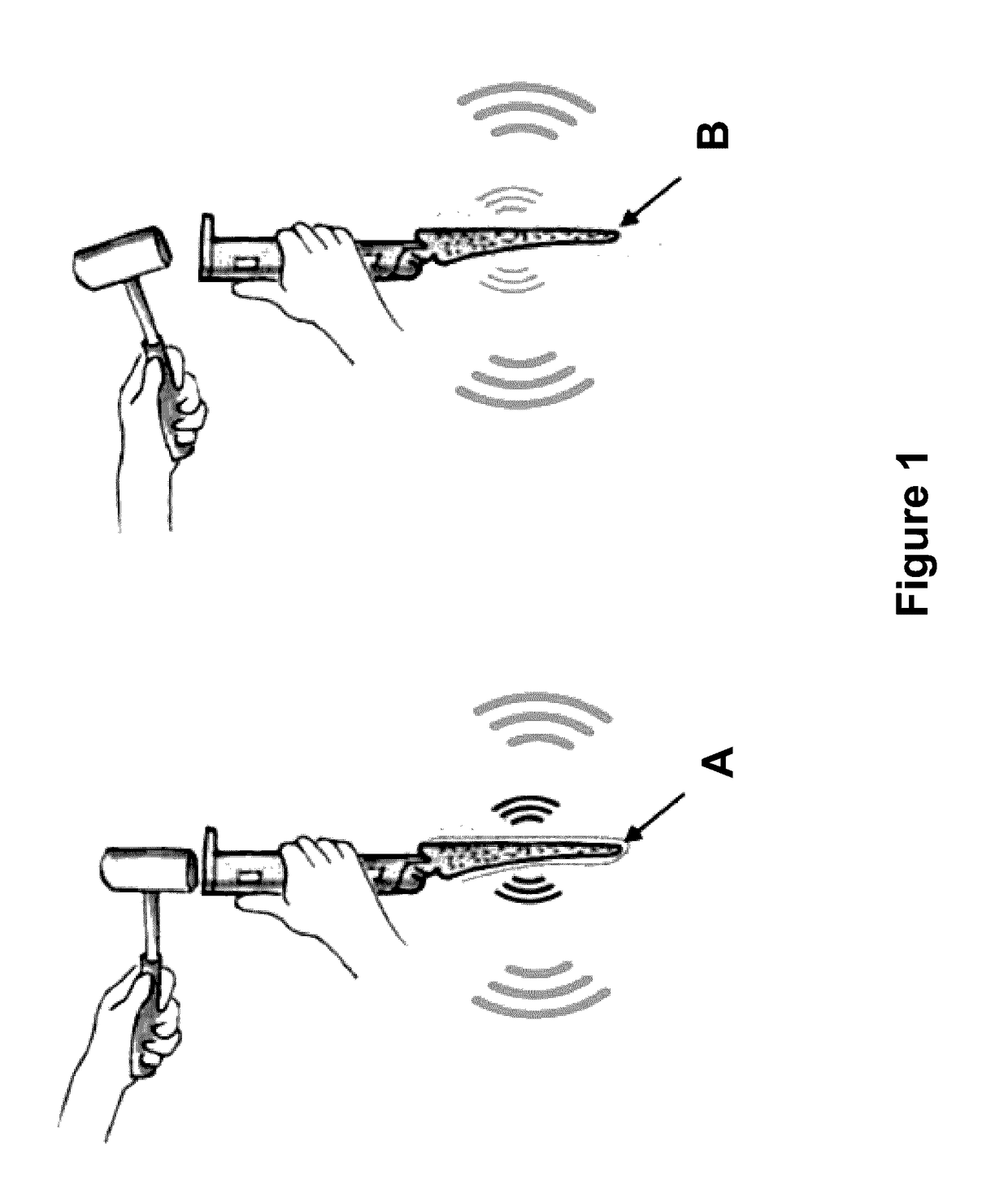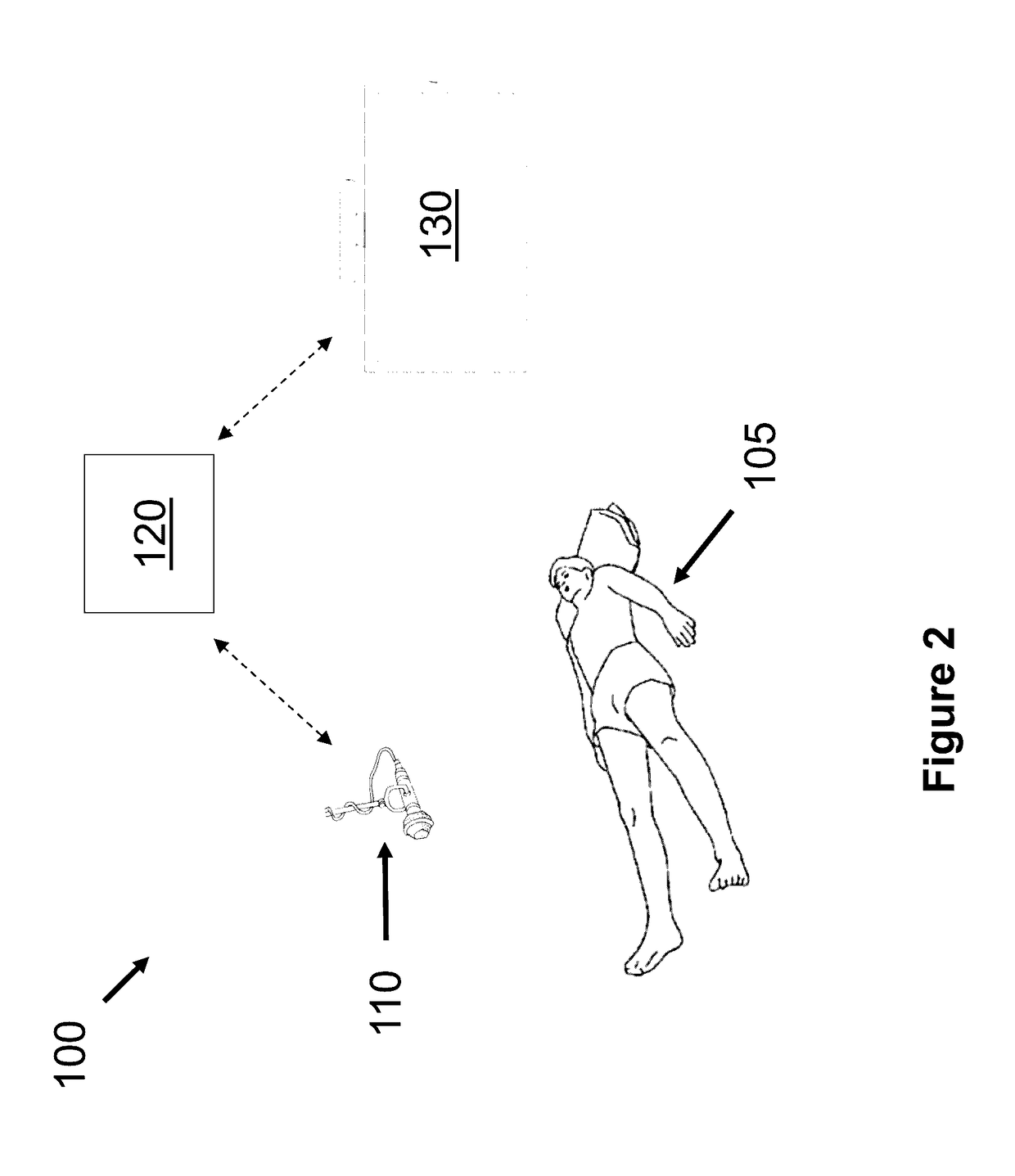Objective, Real-Time Acoustic Measurement and Feedback for Proper Fit and Fill of Hip Implants
a hip implant and real-time acoustic measurement technology, applied in the field of objective real-time acoustic measurement and feedback for proper fit and filling of hip implants, can solve the problems of limiting the range of motion and weight bearing strength of a person, prone to technical errors in procedures, and significant pain
- Summary
- Abstract
- Description
- Claims
- Application Information
AI Technical Summary
Benefits of technology
Problems solved by technology
Method used
Image
Examples
experimental examples
[0061]The invention is further described in detail by reference to the following experimental examples. These examples are provided for purposes of illustration only, and are not intended to be limiting unless otherwise specified. Thus, the invention should in no way be construed as being limited to the following examples, but rather, should be construed to encompass any and all variations which become evident as a result of the teaching provided herein.
example 1
[0062]A prototype was constructed comprising a microphone and computing system with display, running software and algorithms resulting in the following data:
Audio Processing
[0063]Audio data was separated into individual hammer hits, which were analyzed separately. Separation was performed by downsampling the signal by a factor of 100 samples per sample, smoothing an incoming signal using total variation reconstruction, and using a deadband threshold to detect the impact of the hammer in the audio.
[0064]Audio was transformed by applying a Hanning window to the signal, and then taking the discrete Fourier transform (DFT). Signal power in frequency bands of interest, time-domain decay of these components, and other features such as entropy were extracted for use as classifying features (FIG. 7). The signal power in the 1-2 kHz and 5-7 kHz bands in particular were indicative of whether a broach was fully seated in the femur. (FIG. 8)
Classification
[0065]Machine learning...
PUM
 Login to View More
Login to View More Abstract
Description
Claims
Application Information
 Login to View More
Login to View More - R&D
- Intellectual Property
- Life Sciences
- Materials
- Tech Scout
- Unparalleled Data Quality
- Higher Quality Content
- 60% Fewer Hallucinations
Browse by: Latest US Patents, China's latest patents, Technical Efficacy Thesaurus, Application Domain, Technology Topic, Popular Technical Reports.
© 2025 PatSnap. All rights reserved.Legal|Privacy policy|Modern Slavery Act Transparency Statement|Sitemap|About US| Contact US: help@patsnap.com



